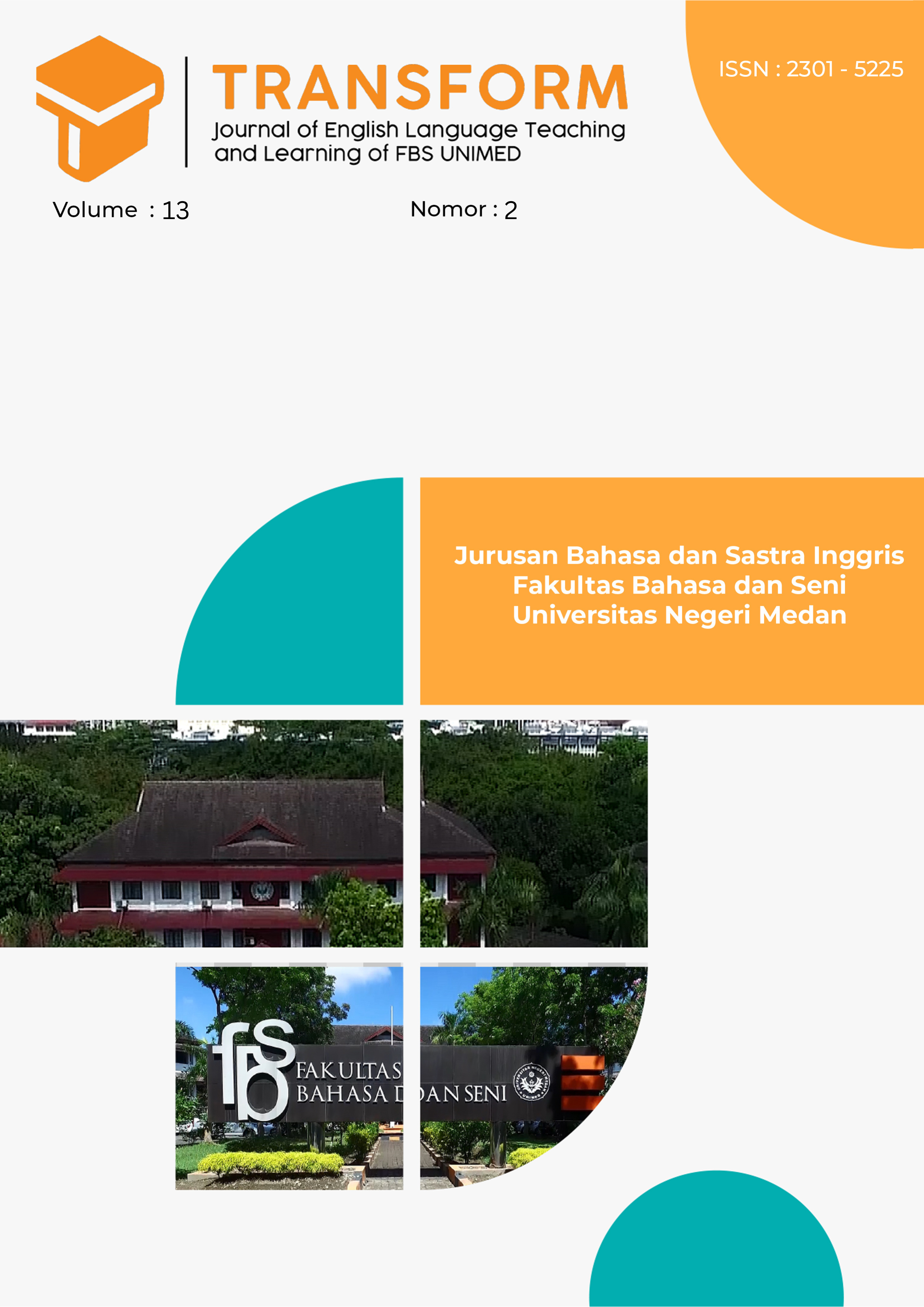An Analysis of Students' Motivation on Using Online Platform in English Learning
DOI:
https://doi.org/10.24114/tj.v13i2.66777Keywords:
EFL Students' Motivation, English Learning, Online PlatformAbstract
This research focuses on finding out students' motivation in learning English using online platforms, what type of motivation they have, intrinsic or extrinsic motivation, and what kind of learning motivation they experience. There are 3 online platforms used in the English learning process, namely Kahoot, Quizizz, and Google Form in class VIII SMPIT Al-Fityah Pekanbaru. In this study, researchers used descriptive qualitative to investigate students' motivation in learning English using online platforms. The instruments used were observation and interviews. Observation data was collected from 2 classes with 25 people each. Observation results show that students have higher intrinsic motivation than extrinsic motivation. In other words, learning motivation that comes from within the student is higher than motivation that comes from outside the student. Besides that, the interview results show students' motivation in learning English using online platforms in every aspect of ARCS (Attention, Relevance, Confidence, and Satisfaction).References
A. Rahmat. (2023). Investigating The Students' Motivation In Learning Efl Through Zoom Cloud Meeting Platform. Jurnal Pendidikan Bahasa Inggris Indonesia, 8-18.
Abidin, M. P.-M. (2012). Efl Students’ Attitudes Towards Learning English Language The Case Of Libyan Secondary School Students. Asian Social Science, 119-135.
Adling, N. M. (2022). Flexible Blended Learning Experiences Of Filipino Students . Language Literacy: Journal Of Linguistics, Literature, And Language Teaching, 22-33.
Ahmed. (2020). Motivation In Learning. Asian Journal Of Education And Social Studies, 3.
Akkoyunlu, B. A. (2008). A Study Of Student's Perceptions In A Blended Learning Environment Based On Different Learning Styles. Journal Of Educational Technology Society, 11-15.
Alabbasi, D. (2017). Exploring Graduate Students' Perspective Toward Using Gamification Techniques In Online Learning. Turkish Online Journal Of Distance Education, 180-195.
Alberto D. Yazon, M. R. (2021). Correlational Study On The Contextual Factors Influencing The Flexible Learning. International Journal Of Management, Entrepreneurship, Social science And humanities, 145-149.
Al-Nofaie, H. (2020). Saudi University Students’ Perceptions Towards Virtual Education During Covid-19 Pandemic: A Case Study Of Language Learning Via Blackboard. Arab World English Journal, 4-20.
Amstrong. (2014). Motivation Defined. E-Book.
Analyn D. Almoite, L. B. (2022). Flexible Learning Engagements: Exploring The Lived Experiences Of The Learners In The New Normal. Open Access Library Journal, 1-7.
Bates, A. (2005). Tachnology, E-Learnig And Distance Education. New York: Routledgefalmer.
Cajurao, E. C. (2023). Exploring Factors Affecting The Adoption Of Flexible Learning . East Asian Journal Of Multidisciplinary Research (Eajmr), 1313-1317.
Collin, M. (2014). Motivation And Creativity. Sternberg: Cambridge University Press.
Creswell, J. W. (2012). Educational Research. America: Library Of Congress Cataloging-In-Publication Data.
Deakin. (2009). Perspectives On The Future Of Flexible Education. Internal Report.
Deakin. (2013). Introducing Flexible Learning. University, Australia: Este Reporte Fue Elaborado Por Deakin University (Australia).
Dornyei, U. (2011). Motivation In Language Learning. Reaserchgate, 324.
Gustiani, S. (2020). Students' Motivation In Online Learning During Covid-19 Pandemic Era: A Case Study. Holistics Journal, 23-35.
Downloads
Published
How to Cite
Issue
Section
License
Copyright (c) 2025 Mifta Huljanah, Harum Natasha

This work is licensed under a Creative Commons Attribution-ShareAlike 4.0 International License.
Authors who publish with this journal agree with the following terms:
- Authors retain copyright and grant the journal right of first publication with the work simultaneously licensed under a Creative Commons Attribution License that allows others to share the work with an acknowledgment of the work's authorship and initial publication in this journal.
- Authors are able to enter into separate, additional contractual arrangements for the non-exclusive distribution of the journal's published version of the work (e.g., post it to an institutional repository or publish it in a book), with an acknowledgment of its initial publication in this journal.
- Authors are permitted and encouraged to post their work online (e.g., in institutional repositories or on their website) prior to and during the submission process, as it can lead to productive exchanges, as well as earlier and greater citation of published work (See The Effect of Open Access).
- This work is licensed under a Creative Commons Attribution-ShareAlike 4.0 International License.








